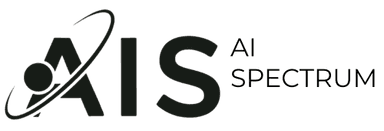AI Agents vs. Structured AI Workflows: Choosing the Right Approach
Guide to deciding between autonomous AI agents and structured AI workflows for app development, focusing on control mechanisms and task adaptability. Features Microsoft AutoGen and LangChain as example tools.
When developing AI-powered applications, choosing between autonomous agents (like those built with Microsoft AutoGen) and structured AI workflows (such as those created with LangChain) is crucial. This guide helps you make an informed decision based on control requirements and task adaptability.
Key Differences:
| Scenario | Agents (e.g., MS AutoGen) | Structured AI Workflows (e.g., LangChain) |
|---|---|---|
| Control Mechanism | Adaptive decision-making | Explicitly defined in code |
| Task Scope | Broad, potentially open-ended | Defined, limited by design |
| Decision Making | Flexible within defined parameters | Follows specific coded logic |
| Human Oversight | Configurable, often minimal | Integrated into workflow design |
| Predictability | Lower, more adaptive | Higher, follows designed paths |
| Development Approach | Agent-centric, requires understanding of agent behavior | Declarative, focuses on step-by-step process definition |
Real-World Scenario Examples:
| Scenario | Recommended Approach |
|---|---|
| 1. Creating a MS Spreadsheet with Fintech data following a structured guideline | Structured AI Workflow |
| 2. Generating a MS Spreadsheet with Fintech data automatically based on open-ended instructions | Agentic Workflow |
| 3. Answering customer service queries with a predefined set of responses | Structured AI Workflow |
| 4. Conducting open-ended research on emerging market trends | Agentic Workflow |
| 5. Automating a fixed sequence of data processing tasks | Structured AI Workflow |
| 6. Developing a chatbot for creative writing assistance | Agentic Workflow |
| 7. Generating daily reports from standardized data sources | Structured AI Workflow |
| 8. Creating personalized workout plans based on varying user inputs | Agentic Workflow |
| 9. Performing routine system maintenance checks | Structured AI Workflow |
| 10. Adapting marketing strategies based on real-time social media trends | Agentic Workflow |
When to Use Agents (MS AutoGen):
- Unpredictable or varied task environments
- Need for adaptive problem-solving
- Complex, multi-step tasks with unclear pathways
When to Use Structured AI Workflows (LangChain):
- Well-defined, predictable processes
- Strict control over AI actions required
- Integration with existing systems and workflows
Decision Framework:
- Assess need for adaptability vs. predictability
- Evaluate task complexity and variability
- Consider integration requirements with existing systems
- Weigh maintenance and debugging needs
- Evaluate team expertise in agent-based vs. structured workflow development
Microsoft AutoGen facilitates creation of adaptive, autonomous agents, while LangChain enables building AI workflows with explicit, code-defined steps. Choosing the right approach ensures alignment with your application's control requirements, task nature, and development team's expertise.
